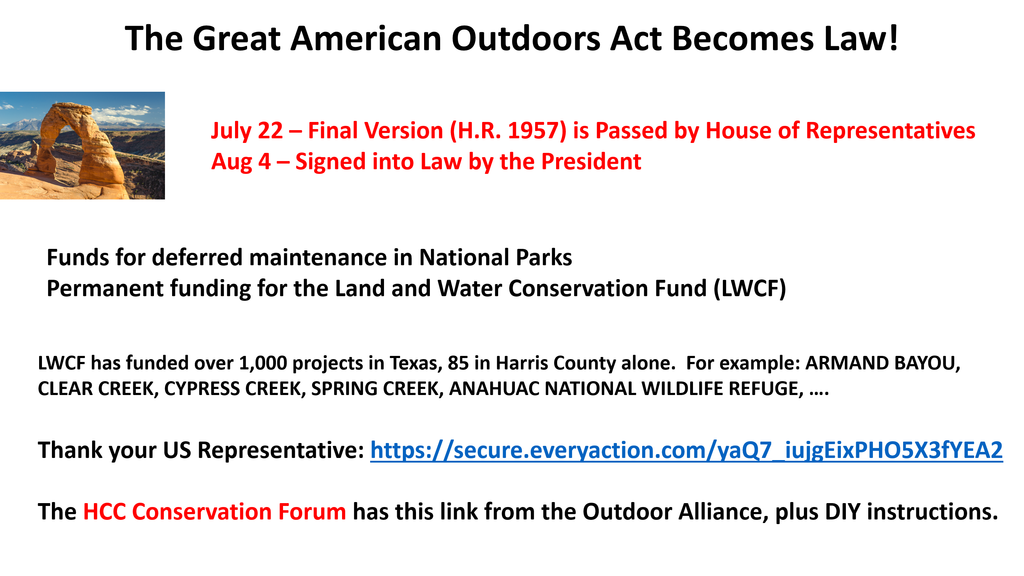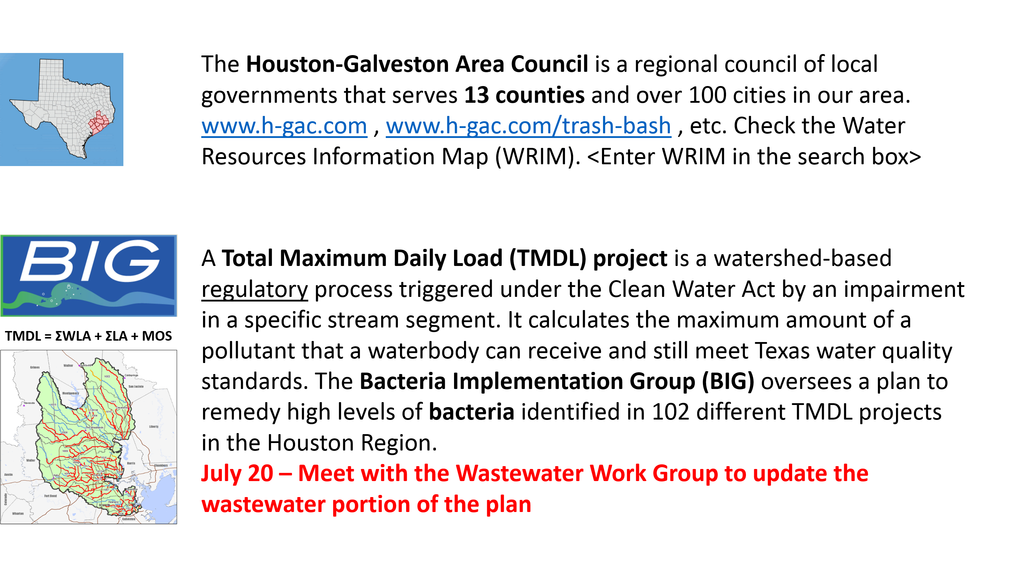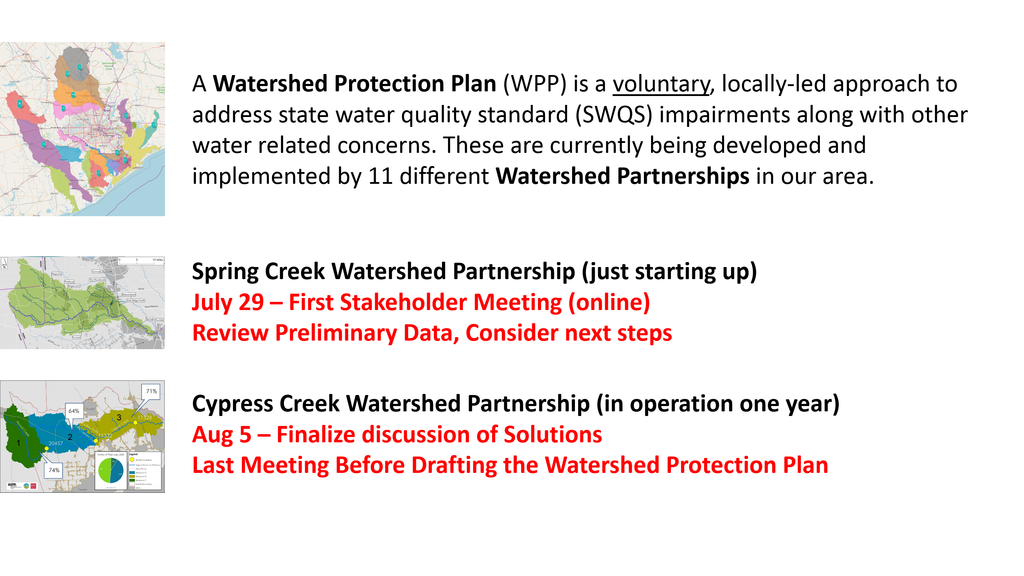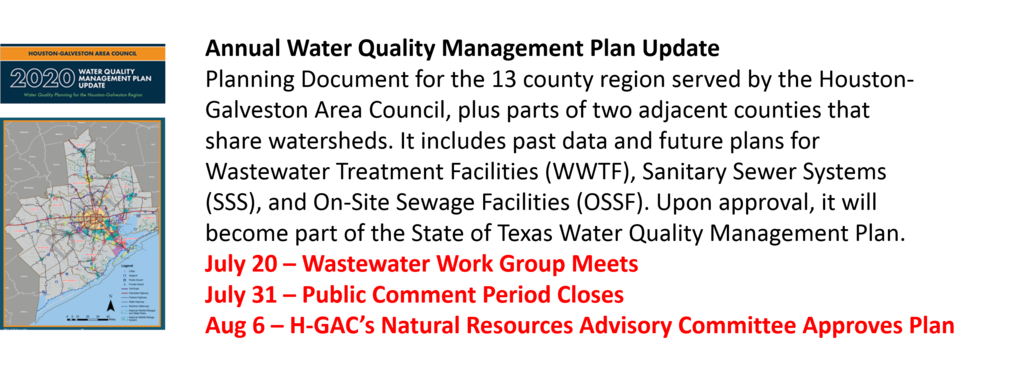This has been an unusually active month for water-related conservation activities..

The Clean Water Act, which was passed by the U.S. Congress in 1972, significantly reorganized and expanded previous federal legislation. Its provisions are implemented by the U.S. Environmental Protection Agency (EPA).
Under the Clean Water Act, each state must establish water quality standards for waters within its borders. Such standards designate the uses of the particular water body (e.g., recreation or protection of aquatic life), establish water quality criteria to protect those uses of the water body, and adopt requirements to protect and maintain healthy waters. Once every two years, each state is required to update lists of its water bodies that do not meet state water quality standards. A plan must be developed to address the issues that are causing the impairment. This may take the form of a Watershed Protection Plan, which is voluntary, or a Total Maximum Daily Load (TMDL) project, which has regulatory authority. The geographical boundaries for the plan will correspond to the boundaries of the physical watershed, rather than to those of a political subdivision such as a county.
Funding for developing a plan, which often comes through federal grants made under the Clean Water Act, is open to nonprofit organizations, state agencies, and political subdivisions of the State of Texas, such as cities, counties, school districts, state universities, and special districts. Entities that have played this role in our area include the Houston Advanced Research Center, Houston-Galveston Area Council, and Texas AgriLife Extension’s Texas Coastal Watershed Program. At the state level, these plans are administered through the Texas State Soil and Water Conservation Board (for rural areas) or the Texas Commission on Environmental Quality (for urban areas).
This month, I participated in several meetings and provided comments on one management plan. The July 29 meeting of the Spring Creek Watershed Partnership was also attended by Kent Walters. In the following slides, the date for each activity is shown in red.



As the designated water quality planning agency for Harris County and 12 neighboring counties, the Houston-Galveston Area Council (H-GAC) is responsible for the development of a regional Water Quality Management Plan (WQMP) for several watersheds within the Greater Houston Area. The Clean Water Act requires that this WQMP be updated as needed to fill information gaps and to revise earlier approved and certified plans. Following internal review, the WQMP will be submitted to the Texas Commission on Environmental Quality (TCEQ). H-GAC’s Water Quality Management Plan Update will become part of the State of Texas Water Quality Management Plan after it is certified by the TCEQ and approved by EPA.
